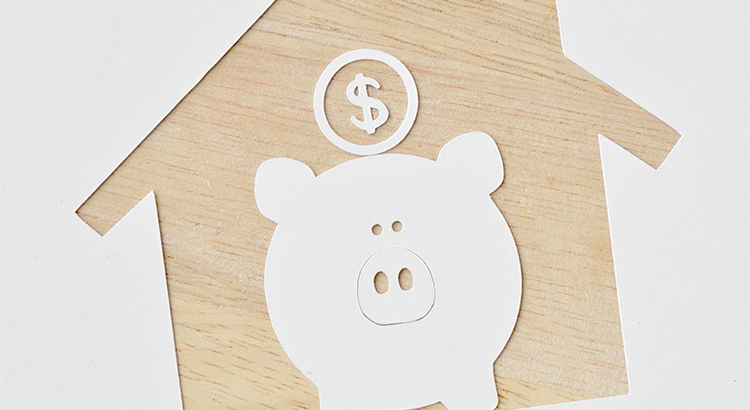Why Properties Are Intentionally Priced Low

In the current real estate market many people have been wondering why some homes are listed for a low price, knowing that they will likely sell for significantly over the asking price. This question has been asked frequently, so let's explore the three reasons why this strategy is commonly employed. Simply put, it's a marketing technique that yields several advantages for the seller. Reason 1: Ignite a Bidding War One of the primary reasons for intentionally listing a property at a low price is to spark a bidding war among potential buyers. By strategically setting an attractive price point, listing agents and sellers can generate significant interest and draw in a larger pool of prospective buyers. As more people visit the property and become emotionally invested, a sense of competition emerges, leading to multiple offers. This bidding war drives up the final sale price, often surpassing the initial asking price significantly. The goal is to create a sense of urgency and encourage buyers to offer higher amounts, resulting in a favorable outcome for the seller. Reason 2: Showcasing Prestige and Generating Buzz Listing a property at a lower price can also serve as a means to showcase prestige within the neighborhood and generate buzz. When a house garners attention due to an enticing price, it can lead to long lines of interested buyers during open houses and showings. This display of high interest not only highlights the desirability of the property but also catches the attention of other homeowners in the vicinity. Listing agents can leverage this opportunity to engage in organic conversations with potential sellers within the neighborhood, potentially securing future listings. The intentional low pricing strategy becomes a conversation starter and a chance to establish a positive reputation within the local community. Reason 3: Leveraging Market Dynamics and Trust Intentionally listing a property at a lower price can demonstrate the seller's understanding of market dynamics. Despite the lower initial listing price, sellers are confident in the market's ability to drive up demand and prices through competitive bidding. They believe that the strong demand will push the negotiation process in their favor, resulting in a final sale price that exceeds the original asking price. Additionally, sellers often have developed a trusting relationship with their listing agent and heavily rely on their expertise in negotiations. This trust ensures that the agent will skillfully navigate the process, securing the best possible outcome for the seller. Bottom Line While there may be a few less honest reasons for intentionally listing a property at a low price, the primary motivations behind this strategy are rooted in marketing tactics and maximizing the seller's profit. By creating a bidding war, generating buzz, and leveraging market dynamics and trust, listing agents and sellers aim to achieve the highest possible sale price. Understanding these reasons provides valuable insights into the common practices seen in the real estate market.
Read MorePowerful Job Market Fuels Homebuyer Demand

The spring housing market has been surprisingly active this year. Even with affordability challenges and a limited number of homes for sale, buyer demand is strong, and getting stronger. One way we know there are interested buyers right now is because showing traffic is up. Data from the latest ShowingTime Showing Index, which is a measure of buyers actively touring homes, makes it clear more people are out looking at homes than there were prior to the pandemic (see graph below): And though there’s less traffic than the buyer frenzy of the past couple of years, we’re not far off that pace. There are a lot of interested buyers checking out available homes right now. But why are buyers so active at a time when mortgage rates are higher than they were just last year? The Job Market Is Growing at a Stronger-Than-Expected Pace With inflation still high, the Federal Reserve (the Fed) repeatedly hiking the Federal Funds Rate, and a lot of chatter in the media about a recession, it might surprise you just how strong today’s job market is. What might be even more surprising is the fact that it appears to be getting stronger (see graph below): Each month, the Bureau of Labor Statistics (BLS) reports how many new jobs were added to the U.S. job market. The graph above shows 88,000 more jobs were created in April than in March. In fact, the April numbers beat expert projections. That’s a solid indicator the job market is growing. Unemployment Is at a Near All-Time Low Ever since the Fed began fighting inflation, many people expected the low unemployment rate we’ve seen over the past couple of years to rise – but that hasn’t happened. In fact, what has happened is the unemployment rate has dropped to 3.4% – a 50-year low (see graph below): With so many people steadily employed and financially stable right now, they’re still able to seriously consider buying a home. What This Means for You If you’re thinking about selling your house this year, a market with active buyers is music to your ears. That’s because there’ll be increased interest in your home when you put it on the market, especially at a time when the number of homes for sale is so low. To get started, your best resource is an experienced real estate agent. They can help you price your house appropriately, navigate the offers you’ll receive, negotiate effectively, and minimize your stress and hassle. Bottom Line There are plenty of buyers out there right now trying to find a home that fits their needs. That’s because the job market is strong, and many people have the stable income needed to seriously consider homeownership. To put your house on the market and get in on the action, let’s connect.
Read MoreRealVitalize: Transforming Homes and Boosting Sale Prices

Recently, we had the pleasure of assisting some incredible sellers who could benefit from some upgrades to their front yard before selling. These sellers had dedicated significant time and resources to create an absolutely spectacular interior in their home. Unfortunately, they received orders for a transfer and found themselves lacking the time and liquid funds to complete the planned front yard landscaping. We understand how costly and demanding the process of moving can be, especially when searching for a new property. That's where our RealVitalize program came to their rescue. Through the RealVitalize program, we were able to step in and support them. We facilitated the hiring of a contractor via Angie's List, providing the sellers with the freedom to choose the best fit for their needs. They were able to review and approve the proposed work and plans for their front yard landscaping. Here's the best part – our program currently offers no fees or interest, making it an incredible opportunity. In just about a week and a half, we were able to have the listing signed, evaluate multiple contractor bids, complete the necessary work, capture stunning property photographs, and finally list the house on the market. The result was exceptional because it brought harmony between the beautiful work done inside the home and its newfound curb appeal. The sellers invested around $8,000 in the front yard landscaping, and as a result, we estimate that the house sold for approximately $20,000 to $25,000 more than it would have without this enhancement. BEFORE & AFTER If you're contemplating selling your house, consider inquiring about our RealVitalize program. It's an incredible opportunity to finish those last-minute projects without any upfront costs. We will guide you in selecting projects that offer a tangible return on investment, and the cost will be collected at the end of escrow, interest free, eliminating the need for you to front the money. Don't miss out on this awesome way to elevate your property and increase its market value. Let us know what questions you have!
Read MoreThe Worst Home Price Declines Are Behind Us

If you’re following the news today, you may feel a bit unsure about what’s happening with home prices and fear whether or not the worst is yet to come. That’s because today’s headlines are painting an unnecessarily negative picture. Contrary to those headlines, home prices aren’t in a freefall. The latest data tells a very different and much more positive story. Local home price trends still vary by market, but here’s what the national data tells us. If we take a year-over-year view, home prices stayed positive – they just appreciated more slowly than they did at the peak of the pandemic. To get a more detailed picture of some of the trends in the market, we need to look at monthly data. The monthly graphs below use recent reports from three sources to show that the worst home price declines are already behind us, and prices are on their way back up nationally. The story this more detailed monthly view tells us is that the last year has been a tale of two halves in the housing market. In the first half of 2022, home prices were climbing, and they peaked in June. Then, in July, home prices started to decline (shown in red in the graphs above). And by roughly August or September, the trend began to stabilize. As we look at the most recent data for the early part of 2023, these graphs also show a recent rebound in momentum with prices ticking back up. Monthly changes in home prices are gaining steam as we move into the busier spring season. While one to two months doesn’t make a trend, the fact that all three reports show prices have stabilized is an encouraging sign for the housing market. The month-over-month data conveys a clear, but early, consensus that a national shift is taking place today. In essence, home prices are starting to tick back up. Andy Walden, Vice President of Enterprise Research at Black Knight, says this about home price trends: “Just five months ago, prices were declining on a seasonally adjusted month-over-month basis in 92% of all major U.S. markets. Fast forward to March, and the situation has done a literal 180, with prices now rising in 92% of markets from February.” Selma Hepp, Chief Economist at CoreLogic, explains the limited supply of homes available for sale is contributing to this positive turn: “ . . . prices in many large metros appeared to have turned the corner, with the U.S. recording a second month of consecutive monthly gains. . . . The monthly rebound in home prices underscores the lack of inventory in this housing cycle.” Here’s What This Means for You Sellers: If you’ve been holding off on selling because you’re worried about what was happening with home prices and how it would impact the value of your home, it may be time to jump back in and partner with an agent to list your house. You don’t have to put your needs on hold any longer because the latest data shows a turn in your favor. Buyers: If you’ve been waiting to buy because you didn’t want to purchase something that would decrease in value, you now have the peace of mind things are looking up. Buying now lets you make your move before home prices climb more and gives you the chance to own an asset that typically grows in value over time. Bottom Line If you put off your plans to move because you were worried about home prices falling, data shows the worst is already behind us and prices are actually rising nationally. Let’s connect so you have an expert on the local market to explain what we’re seeing with home prices in our area.
Read MoreHomeowners Have Incredible Equity To Leverage Right Now

Even though home prices have moderated over the last year, many homeowners still have an incredible amount of equity. But what is equity? In the simplest terms, equity is the difference between the market value of your home and the amount you owe on your mortgage. The National Association of Realtors (NAR) explains how your equity grows over time: “Housing wealth (home equity or net worth) gains are built up through price appreciation and by paying off the mortgage.” How Your Equity Can Help You Achieve Your Goals The equity you build up over the years can be used to your advantage when you sell your current house and buy your next home. If you no longer have the space you need, it might be time to move into a larger home. Or it’s possible you have too much space and need something smaller. No matter the situation, your equity can be a powerful tool you can use to help you make a move in today’s market. That’s because it may be some (if not all) of what you need for your down payment on your next home. And how much equity you have may surprise you. A recent survey from Realtor.com finds many homeowners today estimate they’ve built up a significant amount of equity: The latest data from CoreLogic helps solidify why homeowners are feeling so good about the equity they’ve likely gained over time. As Selma Hepp, Chief Economist for CoreLogic, says: “While equity gains contracted in late 2022 due to home price declines in some regions, U.S. homeowners on average still have about $270,000 in equity, nearly $90,000 more than they had at the onset of the pandemic.” How a Skilled Real Estate Agent Can Help If you’re looking to leverage your equity to boost your buying power in today’s market, having a trusted agent by your side makes a difference. A real estate professional can help you better understand the value of your home, so you’ll get a clearer picture of how much equity you likely have. As a recent article from Bankrate says: “Hiring a skilled real estate agent can give you a realistic estimate of home prices in your area and how to price your current home. Using that figure, you can calculate how much equity you have and what your net proceeds will look like, so you can apply that money toward the down payment and closing costs of your new home.” Having a solid understanding of your equity is key when it comes to making decisions about buying or selling your home. A skilled agent can help you navigate the often-complicated process of selling your house and ensure the transaction goes smoothly. Bottom Line Today, many homeowners are sitting on a substantial amount of equity, and you may be one of them. Let’s connect so we can estimate how much equity you have and plan how you can use it toward the purchase of your next home.
Read MoreThe Worst Home Price Declines Are Behind Us [INFOGRAPHIC]
![The Worst Home Price Declines Are Behind Us [INFOGRAPHIC],Isaiah Votaw](https://files.keepingcurrentmatters.com/content/images/20230511/The-Worst-of-Home-Price-Declines-Are-Behind-Us-KCM-Share.png)
Some Highlights While home prices vary by local area, they’ve already hit their low point nationally, and now they’re starting to rise again. Last July, prices started to decline, but around February, they began climbing back up. If you put your plans to move on hold waiting to see what would happen with home prices, let’s connect to discuss if now’s the right time to jump back in.
Read MoreThe Best Time To Sell Your House Is When Others Aren’t Selling

If you’re thinking about selling your house, you should know the number of homes for sale right now is low. That’s because, this season, there are fewer sellers listing their houses for sale than the norm. Looking back at every April since 2017, the only year when fewer sellers listed their homes was in April 2020, when the pandemic hit and stalled the housing market (shown in red in the graph below). In more typical years, roughly 500,000 sellers add their homes to the market in April. This year, we saw fewer than 400,000 sellers entering the market in April (see graph below): While there are a number of factors contributing to this trend, one thing keeping inventory low right now is that some homeowners are reluctant to move when the mortgage rate they have on their current house is lower than the one they could get today on their next house. It’s called rate lock. As a recent survey from Realtor.com explains, 56% of people who are planning to sell in the next 12 months say they’re waiting for rates to come down. While this wait-and-see approach is right for some sellers, it also creates an opening for more eager sellers to jump in now. If your current house truly doesn’t fit your needs anymore and you’re ready to move, don’t miss this chance to stand out. When fewer sellers are putting their homes up for sale, buyers will have fewer options, so you set yourself up to get the most eyes possible on your house. That’s why your house could see multiple offers as buyers compete over the limited supply of homes for sale – especially if you price it right. As Lawrence Yun, Chief Economist at the National Association of Realtors (NAR), says: “Inventory levels are still at historic lows . . . Consequently, multiple offers are returning on a good number of properties." Bottom Line If you’re ready to sell now, beat the competition before it comes onto the market. If you do, your house should stand out and could get multiple offers. Let's connect to get you market ready.
Read MoreWhy Today’s Housing Market Is Not About To Crash

There’s been some concern lately that the housing market is headed for a crash. And given some of the affordability challenges in the housing market, along with a lot of recession talk in the media, it’s easy enough to understand why that worry has come up. But the data clearly shows today’s market is very different than it was before the housing crash in 2008. Rest assured, this isn’t a repeat of what happened back then. Here’s why. It’s Harder To Get a Loan Now It was much easier to get a home loan during the lead-up to the 2008 housing crisis than it is today. Back then, banks had different lending standards, making it easy for just about anyone to qualify for a home loan or refinance an existing one. As a result, lending institutions took on much greater risk in both the person and the mortgage products offered. That led to mass defaults, foreclosures, and falling prices. Things are different today as purchasers face increasingly higher standards from mortgage companies. The graph below uses data from the Mortgage Bankers Association (MBA) to show this difference. The lower the number, the harder it is to get a mortgage. The higher the number, the easier it is. Unemployment Recovered Faster This Time While the pandemic caused unemployment to spike over the last couple of years, the jobless rate has already recovered back to pre-pandemic levels (see the blue line in the graph below). Things were different during the Great Recession as a large number of people stayed unemployed for a much longer period of time (see the red in the graph below): Here’s how the quick job recovery this time helps the housing market. Because so many people are employed today, there’s less risk of homeowners facing hardship and defaulting on their loans. This helps put today’s housing market on stronger footing and reduces the risk of more foreclosures coming onto the market. There Are Far Fewer Homes for Sale Today There were also too many homes for sale during the housing crisis (many of which were short sales and foreclosures), and that caused prices to fall dramatically. Today, there’s a shortage of inventory available overall, primarily due to years of underbuilding homes. The graph below uses data from the National Association of Realtors (NAR) and the Federal Reserve to show how the months’ supply of homes available now compares to the crash. Today, unsold inventory sits at just a 2.6-months’ supply. There just isn’t enough inventory on the market for home prices to come crashing down like they did in 2008. Equity Levels Are Near Record Highs That low inventory of homes for sale helped keep upward pressure on home prices over the course of the pandemic. As a result, homeowners today have near-record amounts of equity (see graph below): And, that equity puts them in a much stronger position compared to the Great Recession. Molly Boesel, Principal Economist at CoreLogic, explains: “Most homeowners are well positioned to weather a shallow recession. More than a decade of home price increases has given homeowners record amounts of equity, which protects them from foreclosure should they fall behind on their mortgage payments.” Bottom Line The graphs above should ease any fears you may have that today’s housing market is headed for a crash. The most current data clearly shows that today’s market is nothing like it was last time.
Read MoreReasons To Sell Your House Today [INFOGRAPHIC]
![Reasons To Sell Your House Today [INFOGRAPHIC],Isaiah Votaw](https://files.keepingcurrentmatters.com/content/images/20230504/Reasons-To-Sell-Your-House-in-Todays-Market-KCM-Share.png)
Some Highlights Not sure if selling your house is the right move today? You should know there are a number of reasons it still makes sense to sell now. Your house will stand out because inventory is low. That’s why the number of offers on recently sold homes is on the rise. And most homeowners have a lot of equity that can fuel a move. If you’re thinking about selling your house, let’s connect to discuss if now may be the time to move.
Read MoreBuyer Activity Is Up Despite Higher Mortgage Rates

If you’re a homeowner thinking about making a move, you may wonder if it’s still a good time to sell your house. Here’s the good news. Even with higher mortgage rates, buyer traffic is actually picking up speed. Data from the latest ShowingTime Showing Index, which is a measure of buyers actively touring homes, helps paint the picture of how much buyer demand has increased in recent months (see graph below): As the graph shows, the first two months of 2023 saw a noticeable increase in buyer traffic. That’s likely because the limited number of homes for sale kept shoppers looking for homes even during colder months. To help tell the story of why the latest report is significant, let’s compare foot traffic this February with each February for the last six years (see graph below). It shows this was one of the best Februarys for buyer activity we’ve seen in recent memory. In the last six years, we saw the most February buyer traffic in 2021 and 2022 (shown in green above), but those years were highly unusual for the housing market. So, if we compare February 2023 with the more normal, pre-pandemic years, data shows this year still marks a clear rise in buyer activity. The uptick in buyer traffic is even more noteworthy considering the increase in mortgage rates this February. The Freddie Mac 30-year fixed mortgage rate rose from 6.09% during the week of February 2nd to 6.50% in the week of February 23rd. But even with higher rates, more buyers were looking for a home. Jeff Tucker, Senior Economist at Zillow, says the increased buyer activity could continue: “More buyers will keep coming out of the woodwork. We always see a seasonal uptick in home shoppers in March and April . . .” If you’re looking to sell your house, seeing buyers still active in the market this year should be encouraging. It’s a sign buyers are out there and could be looking for a home just like yours. Working with a real estate professional to list your house now will help you get your home in front of eager buyers today. Bottom Line Rising foot traffic is a bright spot for this year’s housing market and indicates that buyers are looking to purchase this year, even with higher mortgage rates. If you’re ready to sell your house, let’s connect.
Read MoreWhat Does "Months of Inventory" Tell You?

As a potential home buyer or seller, it's essential to understand the concept of months of inventory in real estate. It's a vital metric that helps gauge the state of the housing market, determine the level of competition, and make informed decisions about buying or selling a property. So, what is inventory in real estate? Simply put, it refers to the number of homes currently listed for sale in a particular area. The months of inventory, on the other hand, is a metric that shows how many months it would take to sell all the homes on the market, assuming no new listings were added. For instance, if there are 100 homes on the market, and 10 homes sell every month, the months of inventory would be 10 months (100/10=10). A high number of months of inventory indicates a buyer's market, while a low number suggests a seller's market. In San Diego County, the current months of inventory is 1.2, which is incredibly low. A balanced market typically has 4-6 months of inventory. The last time the county had such low months of inventory was during the pandemic, which created a surge in demand for housing. To give some context, in 2008, there were 13 months of inventory, which was a significant buyer's market. However, from 2012 to 2019, the county had a consistent 3-4 months of inventory. This stability allowed for a more balanced market for buyers and sellers. Today, the low months of inventory explain why we're seeing multiple offers on almost every home, particularly in the median price point. This shortage of inventory creates a more competitive market where buyers have to act fast and at times offer above the asking price to stand a chance. If you're interested in buying or selling a property in a particular area, it's crucial to know the months of inventory to make an informed decision. For instance, if the market has a low inventory level, you may have to adjust your expectations, increase your budget, or be prepared for more competition. In conclusion, understanding the months of inventory is an essential step in navigating the real estate market. Click here for graphs showing the current market and months of inventory for North County San Diego. If you need more information or data about your area please contact us and we would be happy to send that information your way.
Read MoreWhat Are the Experts Saying About the Spring Housing Market?

The housing market’s been going through a lot of change lately, and there’s been uncertainty surrounding what will happen this spring. You may be wondering if more homes will go on the market, what’s next with home prices and mortgage rates, or what the best advice is for someone in your position right now. Here’s what industry experts are saying right now about the spring housing market and what it means for you: Selma Hepp, Chief Economist, CoreLogic: “We see more competition among buyers . . . Housing supply also tends to grow during the spring months. And this is also the time of year when relatively more migration happens, as people graduate and move elsewhere looking for jobs.” Greg McBride, Chief Financial Analyst, Bankrate: “I don’t expect big moves in prices in the span of a month, but like the flower buds of spring, the housing market is showing signs of improvement. A pick up in activity with inventory still low does bode well for home prices.” Rick Sharga, Founder and CEO, CJ Patrick Company: “If you can find a home you love and can afford at today’s prices, don’t wait. Home prices in most of the country are unlikely to crash, and mortgage rates will only come down very gradually if they decline at all this year.” Jeff Tucker, Senior Economist, Zillow: “The market is still much friendlier this spring for buyers who can overcome affordability hurdles, but buyers are going to see more competition than they might expect because there are not many homes on the market to go around. New listings are increasing, which they almost always do this time of year, but not nearly as quickly as usual.” Bottom Line If you’re thinking about selling your house, this spring’s a great time to do so while inventory is still so low. And if you’re in a good position to buy, lean on your team of expert advisors for the best advice. Whatever your plans, let’s connect to make sure you’re able to navigate the spring housing market with confidence.
Read MoreHome Inspections for Sellers: What You Need To Know [INFOGRAPHIC]
![Home Inspections for Sellers: What You Need To Know [INFOGRAPHIC],Isaiah Votaw](https://files.keepingcurrentmatters.com/content/images/20230413/Home-Inspections-For-Sellers-What-You-Need-To-Know-KCM-Share.png)
Some Highlights The inspection is a major part of the home selling process. Many buyers used to waive inspections to be more competitive with their offer, but recently, inspections and repairs are becoming popular again. Let’s connect so you have an expert on your side who can help you determine the repairs and updates your house needs before you sell.
Read MoreWant To Sell Your House This Spring? Price It Right.

Over the last year, the housing market’s gone through significant change. While it’s still a sellers’ market, homes that are priced right are selling, and they get the most attention from buyers right now. If you’re thinking of selling your house this spring, it’s important to lean on your expert real estate advisor when it comes to setting a list price. As Realtor.com explains: “Move-in-ready homes with curb appeal and in desirable areas—and that are priced to sell—are especially likely to move quickly this spring.” In today’s market, how you price your house will not only make a big difference to your bottom line, but to how quickly your house will sell. Why Pricing Your House Right Matters Your asking price sends a message to potential buyers, especially today. If it’s priced too low, you may leave money on the table or discourage buyers who may see a lower-than-expected price tag and wonder if that means something is wrong with the home. If it’s priced too high, you run the risk of deterring buyers. When that happens, you may have to lower the price to drive interest when your house sits on the market for a while. But be aware that a price drop can be seen as a red flag by some buyers who will wonder what it means about the home. To avoid either headache, price it right from the start. A real estate professional knows how to determine the ideal asking price. They balance the value of homes in your neighborhood, current market trends, buyer demand, the condition of your house, and more to find the right price. This helps lead to stronger offers and a greater likelihood your house will sell quickly. The visual below helps summarize the impact your asking price can have: Bottom Line Homes priced at the current market value are selling faster and at a better price right now. To make sure you price your house appropriately, maximize your sales potential, and minimize your hassles, let’s connect today.
Read MoreThe Big Advantage If You Sell This Spring

Thinking about selling your house? If you’ve been waiting for the right time, it could be now while the supply of homes for sale is so low. HousingWire shares: “. . . the big question is whether we are finally starting to see the seasonal spring increase in inventory. The answer is no, because active listings fell to a new low last week for 2023 . . .” The National Association of Realtors (NAR) confirms today’s housing inventory is low by looking at the months’ supply of homes on the market. In a balanced market, about a six-month supply is needed. Anything lower is a sellers’ market. And today, the number is much lower: “Total housing inventory registered at the end of February was 980,000 units, identical to January and up 15.3% from one year ago (850,000). Unsold inventory sits at a 2.6-month supply at the current sales pace, down 10.3% from January but up from 1.7 months in February 2022.” Why Does Low Inventory Make It a Good Time To Sell? The less inventory there is on the market when you sell, the less competition you’re likely to face from other sellers. That means your house will get more attention from the buyers looking for a home this spring. And since there are significantly more buyers in the market than there are homes for sale, you could even receive more than one offer on your house. Multiple offers are on the rise again (see graph below): If you get more than one offer on your house, it becomes a bidding war between buyers – and that means you have greater leverage to sell on your terms. But if you want to maximize the opportunity for a bidding war to spark, be sure to lean on your expert real estate advisor. While we’re still in a strong sellers’ market, it isn’t the frenzy we saw a couple of years ago, and today’s buyers are focused on the houses with the greatest appeal. Clare Trapasso, Executive News Editor at Realtor.com, explains: "Well-priced, move-in ready homes with curb appeal in desirable areas are still receiving multiple offers and selling for over the asking price in many parts of the country. So, this spring, it's especially important for sellers to make their homes as attractive as possible to appeal to as many buyers as possible.” Bottom Line If you’ve been waiting for the right time to sell your house, low inventory this spring sets you up with a big advantage. Let’s connect today to make sure your house is ready to sell.
Read MoreHomebuyer Activity Shows Signs of Warming Up for Spring

The spring season appears to be warming up in housing as more and more buyers enter the market. And after rising mortgage rates sidelined so many buyers last year, that’s a good sign for sellers. Realtor.com has the latest: “Spring is officially here, and like green shoots emerging from the bleak winter, new data suggests that more buyers are back in the market, although more subdued compared to a year ago.” We know buyer activity is trending up because of mortgage purchase application data. According to Investopedia: “A mortgage application is a document submitted to a lender when you apply for a mortgage to purchase real estate.” That means the number of mortgage applications shows how many buyers are applying for mortgages. Put another way, an increase in mortgage applications means an increase in buyer demand – and as Joel Kan, VP and Deputy Chief Economist at the Mortgage Bankers Association (MBA), explains, application activity started ramping up as mortgage rates fell steadily in March: “Application activity increased as mortgage rates declined . . . recent increases, along with data from other sources showing an uptick in home sales, is a welcome development.” In fact, we can see how mortgage rates have a direct impact on applications over time. As rates rose dramatically last year, applications fell in response (see graph below): The recent uptick in mortgage applications, as well as the decline in mortgage rates, is good news for sellers because it means more buyers are actively looking for homes. What This Means for You Buyers are coming this spring, which is typically the busiest time of the year in real estate. And as Realtor.com tells us, if you’re a seller, you need to prepare: “If homeowners are planning to sell in 2023, now is the time to get ready.” The means working with a local real estate agent to maximize your home’s appeal and get it listed at the ideal price for your area. Bottom Line The housing market is warming up for spring. If you’re thinking about selling your house and taking advantage of this recent uptick in buyer activity, let’s connect.
Read MoreWhy Aren’t Home Prices Crashing?

There have been a lot of shifts in the housing market recently. Mortgage rates rose dramatically last year, impacting many people’s ability to buy a home. And after several years of rapid price appreciation, home prices finally peaked last summer. These changes led to a rise in headlines saying prices would end up crashing. Even though we’re no longer seeing the buyer frenzy that drove home values up during the pandemic, prices have been relatively flat at the national level. Lawrence Yun, Chief Economist at the National Association of Realtors (NAR), doesn’t expect that to change: “[H]ome prices will be steady in most parts of the country with a minor change in the national median home price.” You might think sellers would have to lower prices to attract buyers in today’s market, and that’s part of why some may have been waiting for prices to come crashing down. But there’s another factor at play – low inventory. And according to Yun, that’s limiting just how low prices will go: “We simply don’t have enough inventory. Will some markets see a price decline? Yes. [But] with the supply not being there, the repeat of a 30 percent price decline is highly, highly unlikely.” As you can see in the graph below, we’ve been at or near record-low inventory levels for a few years now. That lack of available homes on the market is putting upward pressure on prices. Bankrate puts it like this: “This ongoing lack of inventory explains why many buyers still have little choice but to bid up prices. And it also indicates that the supply-and-demand equation simply won’t allow a price crash in the near future.” If more homes don’t come to the market, a lack of supply will keep prices from crashing, and, according to industry expert Rick Sharga, inventory isn’t likely to rise significantly this year: “I believe that we’re likely to see low inventory continue to vex the housing market throughout 2023.” Sellers are under no pressure to move since they have plenty of equity right now. That equity acts as a cushion for homeowners, lowering the chances of distressed sales like foreclosures and short sales. And with many homeowners locked into low mortgage rates, that equity cushion isn’t going anywhere soon. With so few homes available for sale today, it’s important to work with a trusted real estate agent who understands your local area and can navigate the current market volatility. Bottom Line A lot of people expected prices would crash this year thanks to low buyer demand, but that isn’t happening. Why? There aren’t enough homes for sale. If you’re thinking about moving this spring, let’s connect.
Read MoreWe’re in a Sellers’ Market. What Does That Mean?

Even though activity in the housing market has slowed from the frenzy we saw over a year ago, today’s low supply of homes for sale is still a sellers’ market. But what does that really mean? And why are conditions today so good if you want to list your house? It starts with the number of homes available for sale. The latest Existing Home Sales Report from the National Association of Realtors (NAR) shows housing supply is still astonishingly low. Today, we have a 2.6-month supply of homes at the current sales pace. Historically, a 6-month supply is necessary for a ‘normal’ or ‘neutral’ market in which there are enough homes available for active buyers (see graph below): What Does This Mean for You? When the supply of homes for sale is as low as it is right now, it’s much harder for buyers to find one to purchase. That creates increased competition among purchasers and keeps upward pressure on prices. And if buyers know they’re not the only one interested in a home, they’re going to do their best to submit a very attractive offer. As this happens, sellers are positioned to negotiate deals that meet their ideal terms. Lawrence Yun, Chief Economist at NAR, says: “Inventory levels are still at historic lows. Consequently, multiple offers are returning on a good number of properties.” Right now, there are still buyers who are ready, willing, and able to purchase a home. If you list your house right now in good condition and at the right price, it could get a lot of attention from competitive buyers. Bottom Line Today’s sellers’ market holds great opportunities for homeowners ready to make a move. Listing your house now will maximize your exposure to serious, competitive buyers. Let’s connect to discuss how to jumpstart the selling process.
Read More4 Key Tips for Selling Your House This Spring

Spring has arrived, and that means more and more people are getting their homes ready to sell. But with recent shifts in real estate, this year’s spring housing market will be different from the frenzy of the past several years. To sell your house quickly, without hassles, and for the most money, be sure to follow these four simple tips: 1. Make Sure You Give Buyers Access One of the biggest mistakes you can make as a seller is limiting the days and times when buyers have access to view your home. In any market, if you want to maximize the sale of your house, you can’t limit potential buyers’ access to view it. If it’s not accessible, it could cost you by sitting on the market longer and ultimately selling for a lower price. 2. Make Your Home Look as Good as Possible on the Inside For anything to sell, especially your home, it must look inviting. Your real estate agent can give you expert advice on ideal staging for your home. Even updating a room with fresh paint, steam cleaning carpets, or removing clutter from the garage can make a big impact. 3. First Impressions Matter The old saying “you never get a second chance to make a first impression” matters when selling your house. Often, the first impression a buyer gets is what they see as they walk up to the front door. Putting in the work in on the exterior of your home is just as important as what you stage inside. Freshen up your landscaping to improve your home’s curb appeal so you can make an impact with potential buyers. 4. Price It Right This is probably the most important aspect of selling your home in today’s real estate market. If a house is priced competitively, it’s going to sell. Period. To do this, you have to know what’s happening with home prices in your area and understand the factors that are affecting the market right now. That’s why it’s best to work with a trusted real estate professional who can ensure you list your house at the right price. Bottom Line Everyone selling their home wants three things: to sell it for the most money they can, to do it in a certain amount of time, and to do all of that with the fewest hassles. To accomplish these goals, let’s connect so you can understand the steps you need to take to sell your home this spring.
Read MoreGet Ready: The Best Time To List Your House Is Almost Here

If you’re thinking about selling this spring, it’s time to get moving – the best week to list your house is fast approaching. Experts at realtor.com looked at seasonal trends from recent years (excluding 2020 as an uncharacteristic year due to the onset of the pandemic) and determined the ideal week to list a house this year: “Home sellers on the fence waiting for that perfect moment to sell should start preparations, because the best time to list a home in 2023 is approaching quickly. The week of April 16-22 is expected to have the ideal balance of housing market conditions that favor home sellers, more so than any other week in the year.” If you’ve been waiting for the best time to sell, this is your chance. But remember, before you put your house on the market, you’ve got to get it ready. And if you haven’t started that process yet, you’ll need to move quickly. Here’s what you should keep in mind. Work with an Agent To Determine Which Updates To Make Start by prioritizing which updates you’ll make. In February, realtor.com asked more than 1,200 recent or potential home sellers what updates they ended up making to their house before listing it (see graph below): As you can see, the most common answers included landscaping and painting. Work with a trusted real estate agent to determine what projects make the most sense for your goals and local market. If Possible, Plan To Have Your House Staged Once you’ve made any necessary repairs and updates to your house, consider having it staged. According to the National Association of Realtors (NAR), 82% of buyers’ agents said staging a home made it easier for a buyer to visualize the property as a future home. Additionally, almost half of buyers’ agents said home staging had an effect on most buyers’ view of the home in general. Homes that are staged typically sell faster and for a higher price because they help potential buyers more easily picture their new life in the house. Bottom Line Are you ready to sell this spring? Let’s connect to plan your next steps. You can start by making a checklist of what you think your house needs to get ready. Then, we can work together to prioritize your list and move forward together.
Read More
Categories
- All Blogs 406
- Buying Myths 86
- Demographic 16
- Distressed Properties 2
- Down Payments 5
- Equity 1
- First Time Home Buyers 114
- Foreclosures 17
- FSBO 10
- Home Buying 266
- Home Selling 203
- Infographics 80
- Interest Rates 55
- Inventory 3
- Investing 4
- Move-Up Buyers 66
- Pricing 74
- Real Estate Market 209
- Rent vs Buy 24
- Resource 6
- Selling Myths 73
- Senior Market 2
- Video 5
Recent Posts










CONTACT


